A SUP adventure on Derwent Water, the ‘Queen of the Lakes’
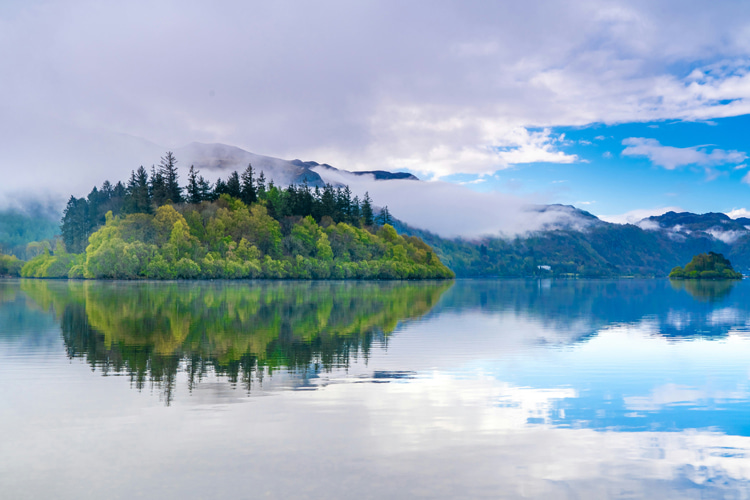
“I’m at the lake. The wind is forecast to pick up through the day with some moderate gusts, but we have a small weather window to paddle. I think it’s fine!” pings a WhatsApp message one late April morning.
It’s from Cal Major, veterinary surgeon, SUP record holder, ocean advocate, and founder of the charity Seaful – she is standing by the shoreline at Crow Park as I make my way north to meet her.
I have dreamed of today’s paddle for so long – six years, to be precise, since I first met Cal at the Women’s Adventure Expo in Bristol in 2017, and she inspired me to believe in my own SUP dreams.
A short time later, we are on the lake, and I am beaming.
After being injured and poorly for much of March and April, I have only just returned to paddling.
An outing with one of the UK’s most inspiring endurance paddleboarders is the best medicine I could possibly ask for.
We are on Derwent Water (or Derwentwater), one of the Northern Lakes, which is the joint third largest lake of the ten we can paddle.
That said, it is significantly shorter than the other large lakes; compared to the thin “ribbon” lakes – including Windermere, Ullswater, and Coniston Water – it is unique in being much more of an oval shape.
There are two voluntary no-boating zones in place to protect feeding and breeding birds, which I think are important to respect.
The first is around Lord’s Island on the eastern shore near Strandshag Bay, and the second is at Great Bay at the head of the lake in the south.
The lake has four larger islands – St. Herbert’s, Rampsholme, Lord’s, and Derwent – as well as the smaller Otterbield, Lingholm, and Otter.
Rampsholme Island’s name is derived from the Old Norse “hrafns holmr,” meaning “wild garlic island.”
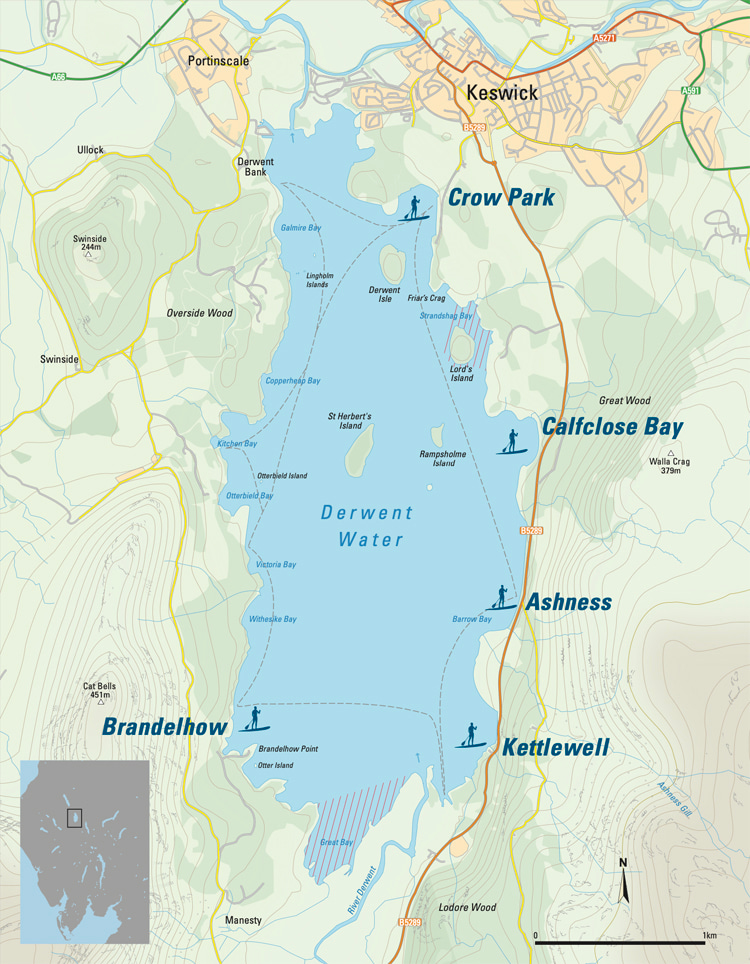
A Special Place
Launching from the shoreline a few minutes walk from the bustling market town of Keswick, we head towards the private Derwent Isle together.
Joseph Pocklington purchased the island, previously called Vicar’s Island, in 1778 and built a house, boathouse, fort, and battery, holding regattas and mock battles as he fired his cannon across the lake.
William Wordsworth was not a fan of the house or Pocklington’s intentions.
It is the only inhabited island on the lake; the National Trust (which owns the island) occasionally organizes visits via canoe: nationaltrust.org.uk.
In the distance, we can see the 451-meter peak of Cat Bells; it was described by Alfred Wainwright as “One of the great favorites, a family fell where grandmothers and infants can climb the heights together, a place beloved.”
To our right are Isthmus Bay and Isthmus Wood, and to our left are the foreshore landings with the beautiful wooden Keswick Launch cruises and rowing boats.
Beyond that is the viewpoint on the 162-meter hill of Castlehead and Castlehead Wood.
“The lake is very special to me,” says Cal.
“I’ve spent a lot of time here in Keswick and trained for my 2021 challenge around Scotland on Derwent Water.”
The challenge she is referring to is her 10-week, 800-mile SUP adventure around the coast of Scotland, exploring our human connection to the sea and the wildlife that calls it home.
An extraordinary three-part documentary about the journey called “Scotland Ocean Nation,” filmed by her partner James Appleton, has been streamed on STV Player.
In 2018, Cal was the first person to paddleboard from Land’s End to John o’Groats, for which she holds a Guinness World Record for the fastest time.
She is also the founder of Seaful, a charity that helps more people reconnect with the ocean and waterways for their mental health and to nurture stewardship of our blue spaces through activities such as snorkeling, beach clean-ups, and paddleboarding.
I am very proud to be an ambassador for Seaful.
Our weather window comes to a close and after hot chocolate at Elm Cafe + Kombucha in Keswick, we say our goodbyes.
While exploring Keswick, I serendipitously meet Ali Phillips, with whom I later paddle on Buttermere.
Cal was the first paddleboarder I heard speak about the possibilities for adventure, joy, and ocean conservation back in 2017, and today, six years later, I finally had a chance to paddle with her.
It was absolutely worth the wait.
As I wrote earlier, Derwent Water holds a special place in my heart, too, as the lake where I took my first lesson on September 24, 2016, with Bo from Lake District Paddleboarding.
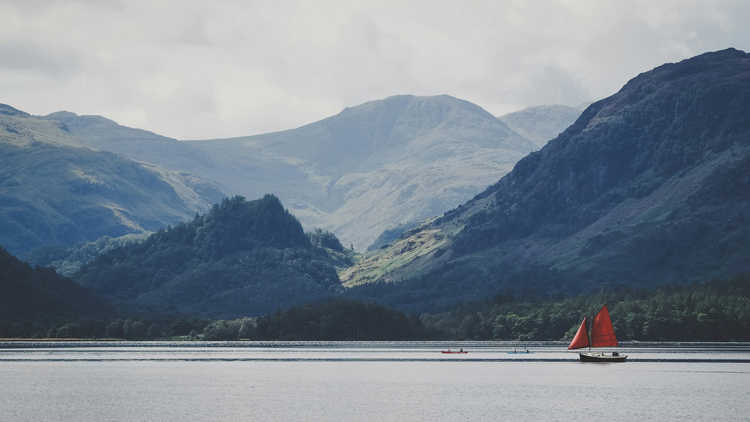
Launching from Keswick
We launched on the north-western shore near to Nichol End, where a few weeks after my morning with Cal, I meet the founder of Northern SUP Race Club, SUP coach, mother of three and personal trainer, Anna Little.
Our plan was to launch from Kettlewell, a beach on the south-eastern shoreline.
However, Anna’s van with her hardboard on top wouldn’t fit under the barrier at the car park entrance, so we hastily changed to Plan B (because in the Lakes, you often need a Plan B!) and were fortunate enough to be allowed a parking spot in the marina’s small car park.
It is late June, clouds are gathering across the blue sky, and the wind is picking up, so for much of the time, we keep in the shelter of the bay while we chat.
Having paddled a lot on the Northumberland coastline and as a successful SUP racer, Anna is no stranger to paddling into a headwind, and I admire her technique and strength.
“Over there is Friar’s Crag, where my husband proposed to me,” she says, smiling and pointing to a promontory south of Derwent Isle on the eastern shore, which has incredible views of the lake and the Jaws of Borrowdale.
According to writer John Ruskin, his first childhood memory was being brought to Friar’s Crag by his nanny; a monument to him was erected here in 1900.
Ruskin later described the view as one of the finest in Europe.
Anna also visited the Lakes as a child with her family, staying on campsites in their small tourer caravan.
When her own boys were small, they would come for summer holidays on Ullswater and Derwent Water.
One of her favorite memories is towing them along behind her on a board – no wonder she is so strong!
Her eldest son James, 17, now races across the UK, and Joey, 15, and Charlie, 12, love paddleboarding and racing too.
While we are still a relatively new sport in the UK, I admire how coaches like Anna are nurturing the next generation of paddleboarders through clubs and racing, and personally for Anna at home, too.
Like Cal, they are creating an inspiring legacy.
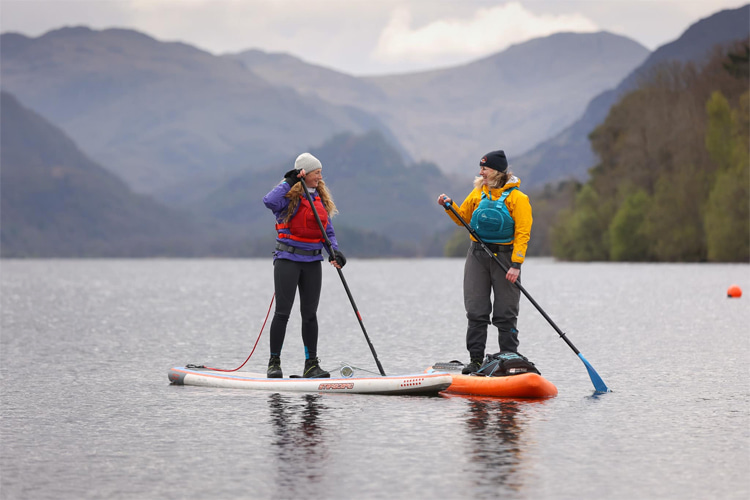
Surrounded by Beauty
In mid-August, I return to the lake and launch from Kettlewell, heading south to Lodore Jetty, where I can see the famous Lodore Falls.
It’s a sweet little bay, but be aware that it is a landing spot for the Keswick Launch.
I then return north towards Calfclose Bay, along the wooded shores of Barrow Point and Barrow Bay.
I paddle from Calfclose Bay to St. Herbert’s Island; once inhabited by a hermit called St. Herbert, it was a filming location for the 2016 adaptation of “Swallows and Amazons” and featured in my first book.
I stop to look at the beautiful Hundred Year Stone, a geometric sculpture carved from a glacial Borrowdale boulder by Peter Randall-Page to commemorate the centenary of the National Trust.
Rising up behind Keswick, I can see the majestic Skiddaw; at 931 meters, it is the fourth highest Wainwright in the Lake District, and its slopes are gradually turning purple with the heather.
Taking note of the no boating zone near Lord’s Island, I journey along the lake towards Nichol End Marine, mindful always of Keswick Launch boats and self-hire cabin cruisers.
After a quick cup of tea at the lovely marina cafe and a chat with the very friendly staff, I head south along the western shore, exploring the view I first saw back in 2016 which so captured my heart and imagination.
Much of this shoreline is private (belonging to the Lingholm Estate), and public parking is very limited, making it quieter than the eastern shore.
I relish the peace, the woods, the coves, and the views across to Walla Crag, Great Wood, and Falcon Crag from the water.
According to the National Trust, you might spot red squirrels, roe deer, or even an otter here.
Along with St. Herbert’s Island, which Eliza Lynn Linton described as “the sweetest of all,” this is my favorite part of Derwent Water.
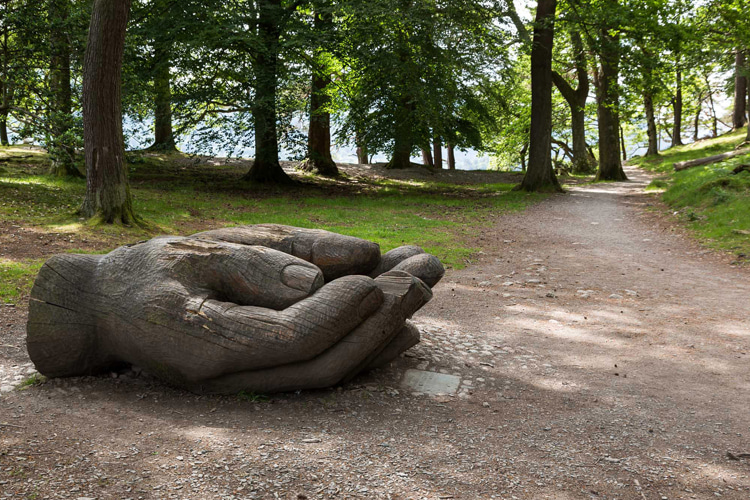
Food for the Soul
Beatrix Potter spent her summers from 1885 to 1907 on the Lingholm Estate and neighboring Fawe Park after her first visit to the Lakes in 1882, when she stayed at Wray Castle on Windermere.
The area inspired much of her writing, including “The Tale of Mrs Tiggy-Winkle,” “The Tale of Squirrel Nutkin,” and “The Tale of Benjamin Bunny.”
The National Trust even has a photo of her sketching on the shore of St. Herbert’s Island.
A passionate believer in conservation and a friend of Canon Hardwicke Rawnsley, one of the three founding members of the National Trust, Potter bequeathed the charity 4,000 acres of land and 14 farms upon her death in 1943.
Where the Derwentwater Walk meets the shoreline and at the Keswick Launch jetties, I chat to the cheery hikers and holidaymakers.
The lakeshore further south at Brandelhow has public access and is a special place for the National Trust, which was its first acquisition in the Lakes in 1902.
An oak sculpture called Entrust or “The Hands Sculpture” by local artist John Merrill commemorates this significant milestone.
Further south, Manesty Park was acquired five years later.
In Brandelhow Bay, you will also spot some large spoil heaps, left over from when Cat Bells was mined for silver, lead, and copper during the reign of Elizabeth I in the 16th century.
I have planned a sunset paddle from Crow Park, where I met Cal, so I return to Kettlewell to write up my notes and nip to Booths, a local supermarket in Keswick, for a picnic.
I love the gentle hum of a late summer evening here as locals and holidaymakers queue for the Theatre by the Lake and friends relax on the grass.
With the Keswick Launch safely moored, I launch again and paddle around Derwent Isle and Friar’s Crag, momentarily pausing to look across the view that Ruskin described as creating “intense joy mingled with awe.”
Derwent Water is often referred to as “The Queen of the Lakes” because of the way it’s cradled by the surrounding fells and has welcomed generations of visitors to its shores.
Eliza Lynn Linton described Derwent Water as the “gem of the whole. Whatever there is of beauty special to the other districts is here in its ripest fullness.”
Derwent Water will always be special to me.
A lake that quite literally changed the course of my life. It is a gem indeed and one I hope you will treasure, too.
Words by Jo Moseley | Stand-Up Paddleboarder and Author of “Stand-Up Paddleboarding in the Lake District”



